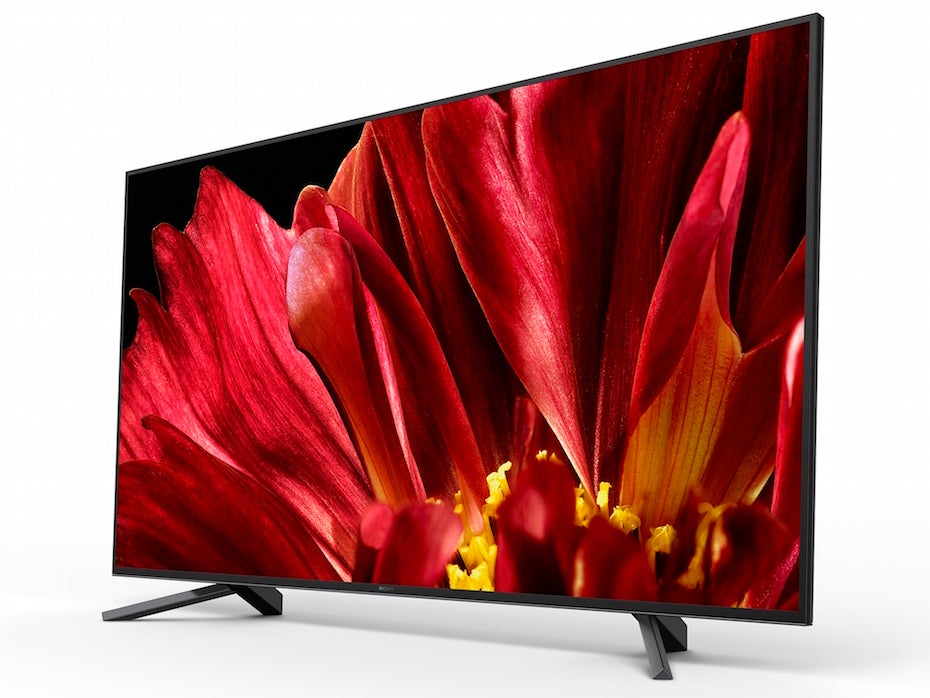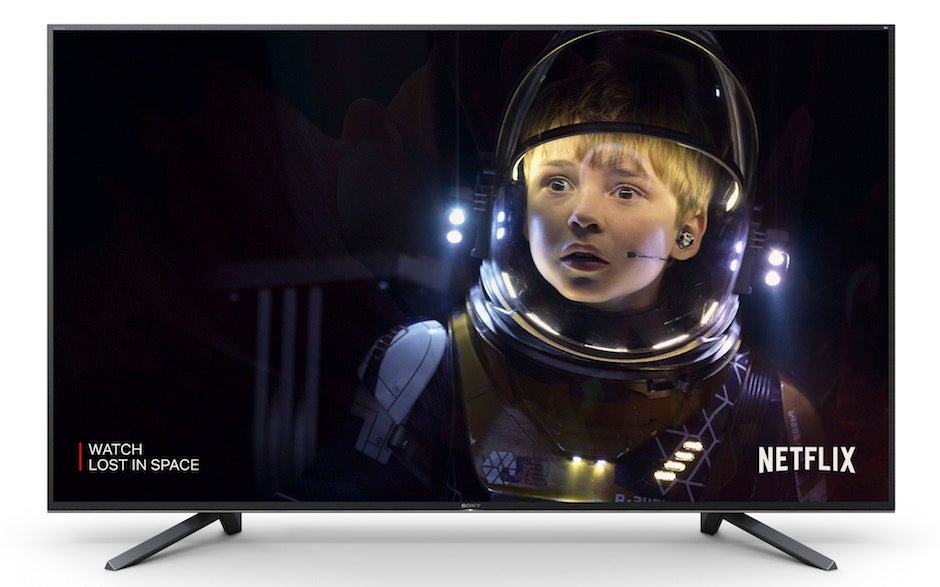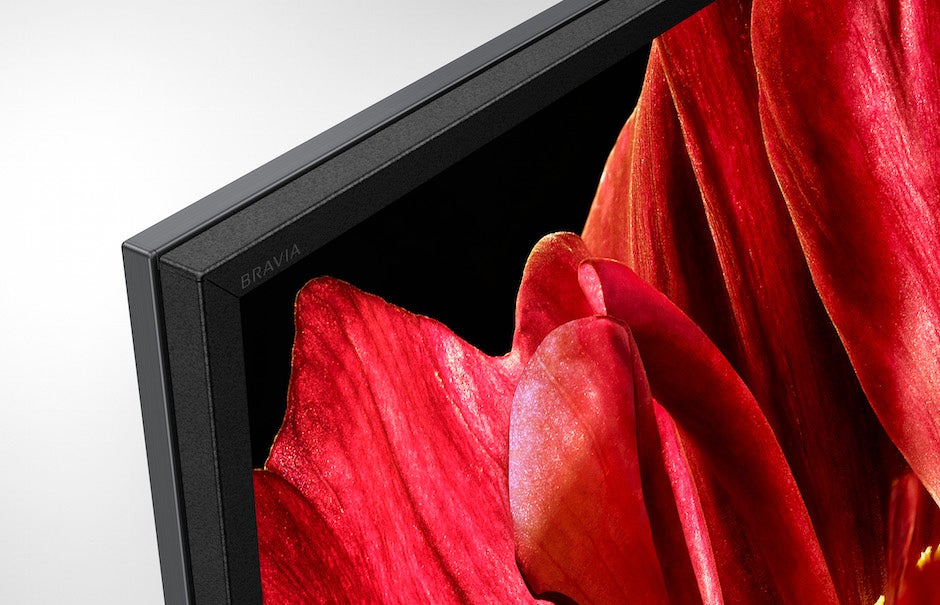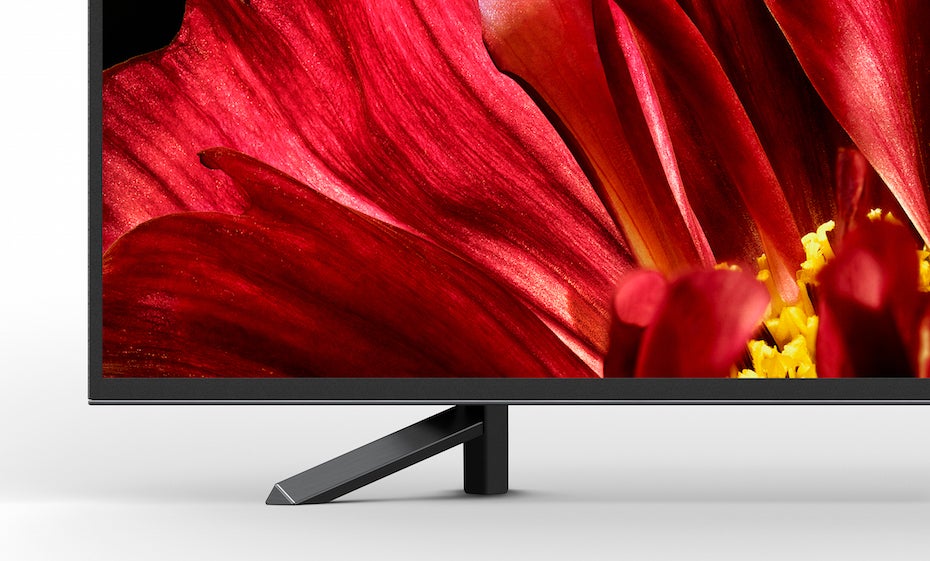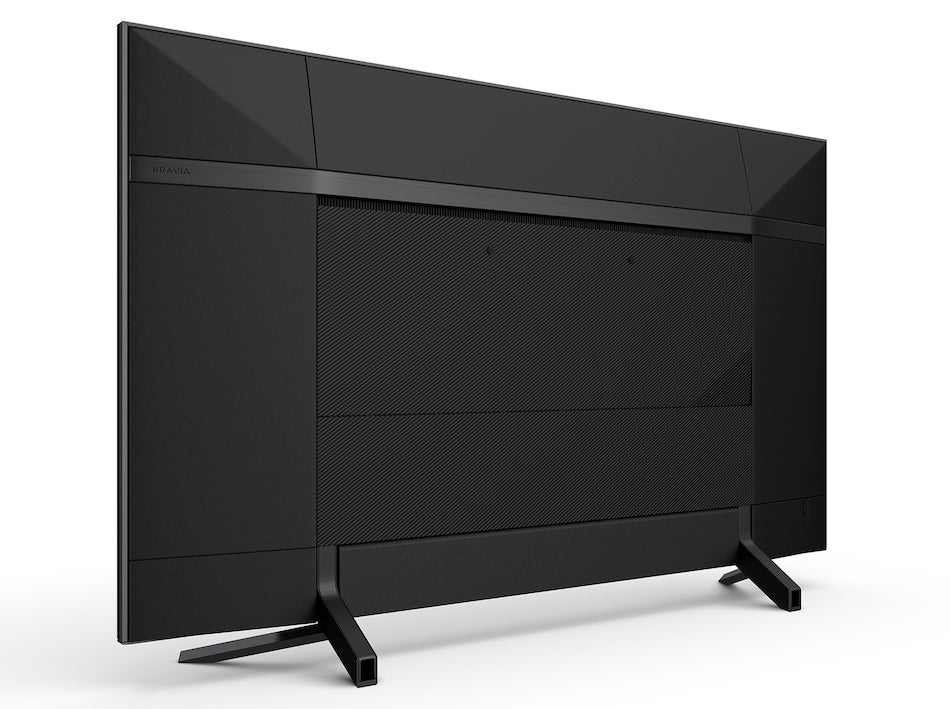Sony ZF9 Review
Sony ZF9
The sequel to Sony's classic ZD9 TV is here at last. So has the best just got better?
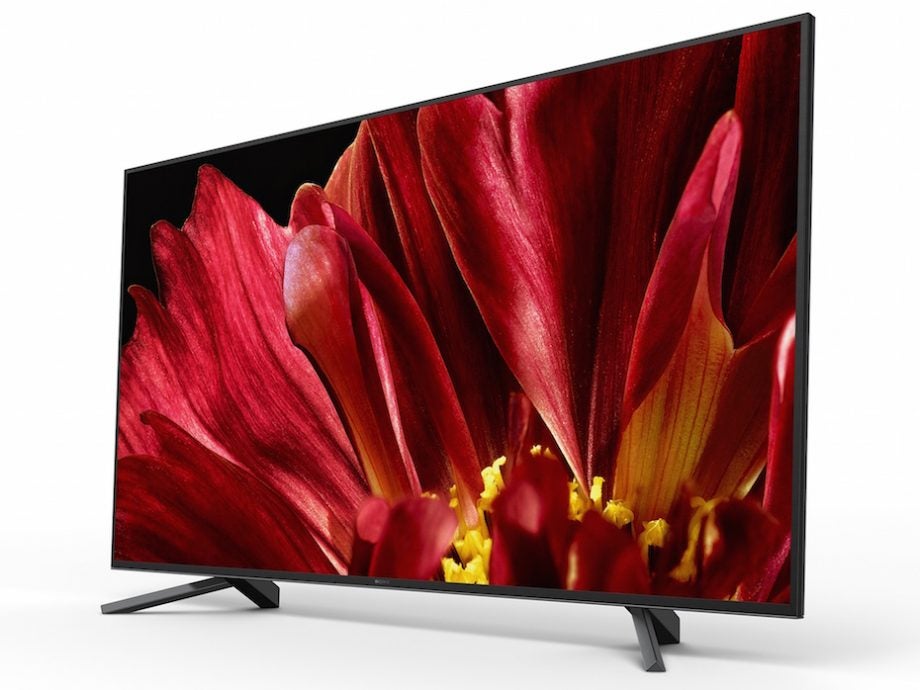
Verdict
Pros
- Impressive video processing
- Much cheaper than its predecessor
- Groundbreakingly wide viewing angle support for LCD
Cons
- Black levels are limited
- Backlight blooming appear too readily around bright objects
- Awkward remote control
Key Specifications
- Review Price: £2,799
- 65-inch LCD TV with direct backlighting and local dimming
- Native 4K resolution
- HDR10, HLG and Dolby Vision HDR support
- Unprecedentedly wide viewing angle for an LCD TV
- X1 Ultimate processor
What is the Sony ZF9?
The Sony ZF9 is the much-anticipated and long-awaited sequel to 2016’s groundbreaking Sony ZD9. Like its predecessor, it uses direct lighting with local dimming. This time, however, it also comes packing Sony’s brand-new X1 Ultimate video processor, a Netflix Calibrated mode, and groundbreaking wide viewing angle technology – all at the far more tempting price of £2800.
As the second flagship LCD TV of 2018, the Sony ZF9/Z9F has one product to beat: the Samsung Q9FN.
Tested here is the 65-inch version, the Sony KD-65ZF9. There is also a 75-inch Sony KD-75ZF9, yours for £5000. Note that in Europe it’s called the ZF9, but in the US it’s called the Z9F.
Related: Best TVs 2018
Sony ZF9 – Design and build
The Sony ZF9 looks like what it is: a serious TV. Its robust frame is trim, bluntly rectangular, and uniformly dark when viewed straight on. Up close you can see that the frame boasts a cool, textured finish, but this isn’t noticeable from a typical viewing distance.
It looks more stylish if viewed from an angle. It’s here that you become aware of its two-layer ‘sandwich’ design, where a sleek, metallic-looking frame is stuck onto the rear of the textured front.
This TV’s rear protrudes much further than those of most other current models. Personally, this isn’t an issue – but it could be, perhaps, if you’re thinking of wall-mounting the TV. In fact, the relatively chunky rear is a pleasant reminder of the Sony ZF9’s promising direct LED backlighting.
The rear panel looks very neat, thanks to its cable tidying system of detachable covers and foot channeling. Just bear in mind that the use of separate feet near the unit’s bottom corners means you’ll need to place the Sony ZF9 on a pretty big stand.
Unfortunately, Sony hasn’t come up with a radically redesigned remote control to accompany the ZF9. It’s only a minor variant on the same fiddly handset the company has stuck with for years now. The layout is confusing, and its buttons sit too flush to the handset’s front for comfort.
Sony ZF9 – Features
The Sony ZF9’s LCD panel uses direct LED lighting with local dimming. In other words, it uses LEDs set directly behind the screen rather than around its edges, and can output different levels of light from different clusters of its LEDs at any given moment. This approach can usually be relied on to deliver superior contrast.
However, closer investigation of the backlighting system uncovers a couple of limitations versus the arrangement used in its ZD9 predecessor. First, it doesn’t used focused beam technology to reduce light ‘scatter’. Second, it appears to use only around 100 separate dimming zones, versus more than 600 on the ZD9.
Hopefully, Sony’s shiny new X1 Ultimate processing engine will be able to compensate. On paper, it certainly looks like it could be powerful enough to achieve this. And Sony has, of course, designed new algorithms specifically focused on managing the new backlight system.
The X1 Ultimate has plenty of other tricks up its sleeve. Including playing its part in putting to bed the LCD TV world’s issues with viewing angles. As we’ll see in more detail in the Performance section, colours and contrast look as rich if you watch the KD-65ZF9 from almost right angles as they do if you’re watching it from directly opposite.
This would be a big deal under any circumstance. But it’s especially important here given that Sony wants its pictures to track as closely as possible to those of its own BVM-X300 OLED mastering monitor.
X1 Ultimate also claims to deliver banding-free HDR colours, and outstanding motion control with the help of Sony’s X-Motion Clarity processing. First seen on the Sony 65XF9005 TVs, X-Motion Clarity manipulates the screen’s direct lighting and local dimming to deliver crisp, clean but still natural on-screen movement. The sort of natural motion, in fact, usually only achieved via black frame insertion techniques – but without black frame insertion’s dimness and flickering.
X1 Ultimate also improves Sony’s HDR remastering system for converting SDR to HDR. It now looks at much smaller objects when calculating effects, for more accurate local colour and brightness expansion.
It improves on the HD to 4K upscaling of the previous X1 Extreme chipset, too, by applying its separate noise and detail databases to pictures on an object-by-object basis, rather than a ‘whole screen’ basis.
The Sony ZF9 marks a big shift in Sony TV ‘policy’ by introducing proper calibration tools for the first time. Also on the calibration front, it deploys an industry-first Netflix Calibrated picture preset. Available while using the Netflix app, it applies picture settings designed in partnership with the streaming service that should deliver Netflix’s own, home-grown shows more accurately.
In practice, with HDR shows this leads to slightly darker pictures, and slightly flatter but marginally more refined colours. In SDR shows it appears to turn off all of Sony’s HDR upscaling technologies, leaving pictures looking much darker but more natural and balanced.
The Sony ZF9 partners up with Dolby as well, to deliver support for the Dolby Vision high dynamic range platform. This adds extra frame-by-frame image data to boost HDR picture quality.
That isn’t the end of the collaborations, either. There’s also IMAX Enhanced image support, which means the set is approved by IMAX as being capable of unlocking the full picture quality from the upcoming IMAX-approved 4K Blu-ray masters. Masters that have, apparently, been created using proprietary IMAX techniques and equipment, and which will try to preserve – where possible – the aspect ratios of any IMAX sequences a film may contain. We’ll bring you more on this when the first IMAX Enhanced films are released.
There’s no support for the new HDR10+ HDR format – which, like Dolby Vision, provides scene-by-scene data to help TVs handle HDR better. This isn’t surprising, though; at the time of writing, there aren’t any TVs that support both HDR10+ and Dolby Vision.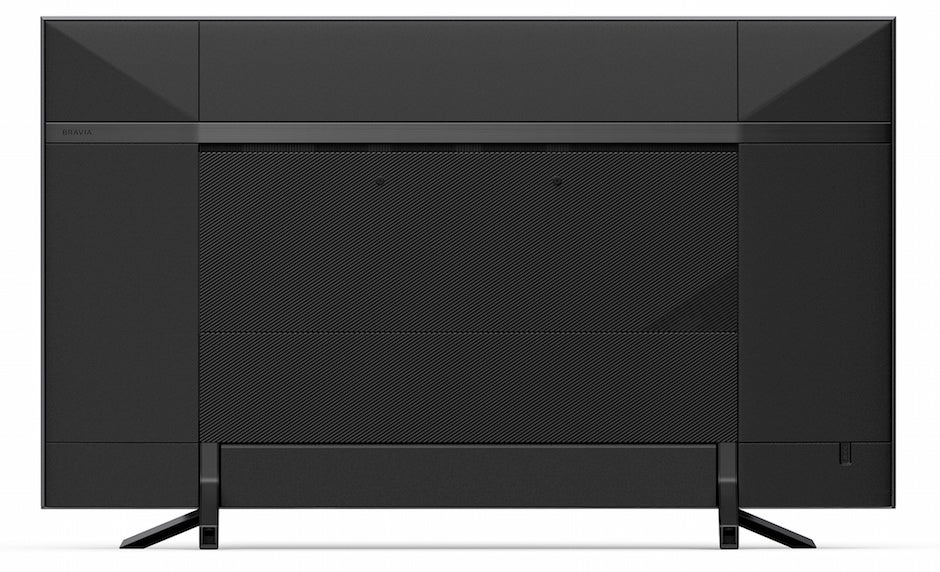
The Sony ZF9 uses Android TV to provide its smart features. On one level, this isn’t great news. In my opinion, even the Android TV 8.0 platform debuting here continues to use a clumsy interface and offers too little customisation. In addition, it still seems to push what feel like random recommendations at you more than most rival platforms.
There is some good news, though. First, X1 Ultimate and Android TV 8.0 play pretty nicely together. The TV’s setup menus run far more slickly than those of Sony TVs with X1 Extreme processors. The system is much less prone to crashing and offers a more refined and thoughtful presentation. This includes more focus on live TV, a dedicated Netflix ‘shelf’, and less clumsy access to external AV inputs.
Google Assistant is now online, too, adding voice control to your Android TV experience. Plus, of course, Chromecast is on hand to enable straightforward content sharing.
The Sony ZF9’s connections are up to high-end TV speed. All four of its HDMIs, for instance, support 4K and HDR up to 60fps. Also, even though these HDMIs aren’t built to the new HDMI 2.1 standard, they support HDMI 2.1’s eARC system. This can pass lossless object audio formats such as Dolby Atmos and DTS:X from the TV to an AV receiver using the same HDMI cable that’s supplying video to the TV.
There are also three USBs for multimedia playback and recording from the digital tuner to external USB HDD. Plus, of course, there are wired and wireless network options.
Sony ZF9 – Setup
The Sony ZF9 needs to be set up pretty carefully to get the best out of it.
Particularly important is the local dimming system. This should be set to Medium; High exaggerates backlight blooming problems around stand-out bright objects. Low and Off reduce the blooming, but only because they make black levels look washed out.
The picture presets require special attention, too. Standard, in my opinion, gives the best all-round image. However, it only outputs around 1250 nits of brightness, while the Vivid and Cinema modes deliver well over 1500 nits. So why is it better? Because its lower brightness reduces the impact of various backlight issues I’ll talk about in the Performance section.
I’d also recommend care with Sony’s motion processing. The company has greatly reduced the number of motion presets the KD-65ZF9 carries – which, in my opinion, leaves you to turn to the new Custom setting to get the best results when watching 24fps films. I’d recommend setting the smoothness and blur elements to just one each for the most natural, clean and crisp look.
Sony ZF9 – Performance
Sony’s 2016 KD-65ZD9 is one of the best LCD TVs ever made. And the expectation for its successor has to be that it will be even better. Especially given it’s taken two years to arrive. Unfortunately, this time round those expectations are going to have to be, well, managed.
Let’s start with the good news: The X1 Ultimate processor is very impressive. The detail refinement it delivers is outstanding. I could see minute details in 4K Blu-rays I watch all the time that I hadn’t seen before. Especially in extreme foreground and distant objects. Oddly, mid-distance content looked a touch softer. Overall, though, the insight into native 4K pictures that the KD-65ZF9 can deliver is often remarkable.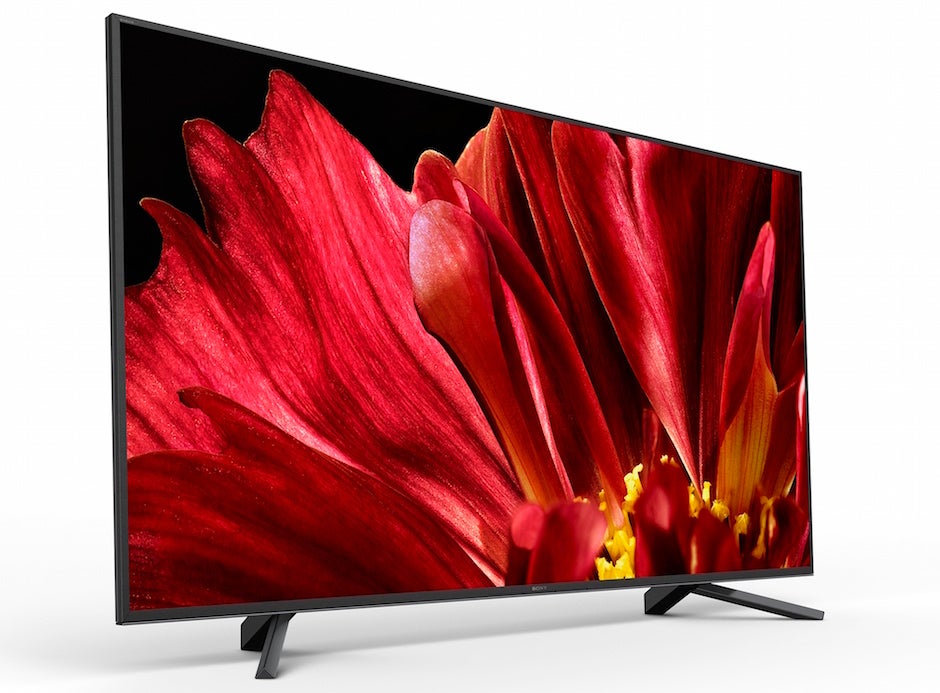
This TV is at least as remarkable at upscaling HD and even SD sources. The combination of Sony’s dual database upscaling (where incoming images are compared against separate noise and detail enhancement ‘libraries’) and new object-based image analysis delivers staggeringly effective upscaled images.
Detail levels genuinely look close to native 4K. And there’s practically no trace post-upscaling of the excessive grain or compression noise artefacts sub-4K sources may contain.
The 65ZF9’s processing power provides gorgeous colour refinement, too. There isn’t so much as a hint of colour banding with HDR, even during notoriously difficult content such as the ‘white alien room’ sequences in Arrival.
Objects look more three-dimensional, due to the essentially immaculate colour blending. Skin tones look consistently real and subtly delineated, rather than plasticky or blotchy.
The KD-65ZF9’s colour refinement contributes heavily to the picture’s overall feeling of sharpness as well. As does an impressive ability to tease out even the faintest, darkest details during dark scenes. In fact, the KD-65ZF9 outperforms even stellar rivals such as the LG C8 and E8 OLEDs and the Samsung Q9FN LED TVs in this crucial area.
This model is bright enough, meanwhile, to deliver punchy light peaks with HDR pictures. Sunsets and sun reflecting on metal, for example, looks seriously pristine and intense, with exceptional amounts of subtle shading and colour detailing. In this respect, the KD-65ZF9 is particularly superior to its ZD9 predecessor.
Motion looks class-leadingly clean but also natural, provided you follow the setup advice provided earlier. This, again, helps to reinforce the KD-65ZF9’s exceptional clarity and detailing.
As mentioned briefly earlier, the KD-65ZF9’s picture prowess remains mostly unchanged, even if you watch it from a wide angle. Sony really has cracked this blight on LCD performance, with no slump in black level or colour response whatsoever whilst watching the KS-65ZF9 even from pretty much right angles.
However, there is one aspect of LCD picture quality that the KD-65ZF9’s viewing angle technology hasn’t fully addressed: blooming. The wider your viewing angle becomes, the more you start to notice light clouds appearing around bright HDR objects that stand out against relatively dark backdrops.
Unfortunately, the backlight blooming isn’t restricted to wide-angle viewing. You can see it pretty readily when you’re sitting directly opposite the KD-65ZF9, too.
If you stick with the Medium local dimming setting, the intensity of the light blooms is fairly subtle. But the light halos can extend a good few centimetres beyond the edges of bright objects, making them hard to ignore. Especially if the contrast between a light and dark object is particularly extreme, and if you’re watching in a dark room.
The extent of the light blooms can cause quite large areas of dark pictures to suddenly go quite grey. It can extend into the black bars above and below films that use an aspect ratio wider than 16:9, too. Or they move around the picture as they track bright-moving objects. In both of these scenarios, its distraction potential is greatly increased.
This sort of issue is a far cry from the lovely, pretty much bloom-free black levels witnessed on the old KD-65ZD9. And I guess it can only be down to one of two things. Either it’s the KD-65ZF9’s relatively small number of local dimming zones versus the KD-65ZD9, or it’s a side effect of the optical technologies Sony has implemented to solve LCD’s viewing angle problem.
Backlight shortcomings aren’t restricted to blooming. Dark scenes generally tend to look greyer than expected, too. With HDR content, in particular, there just isn’t the same black level depth that you get with OLED TVs – or the Samsung Q9FN. In fact, Sony’s own, significantly cheaper XF9005 left a more satisfying impression when it comes to black levels.
This limitation can also flatten colour response in dark areas of the picture, and around very bright picture elements. Sadly, there isn’t anything you can do about these backlight issues; they occur even with the picture set up to deliver its optimum black levels.
One final aspect of the KD-65ZF9’s pictures to consider is input lag – how long it takes to render image data received at its connections. Happily, gamers will be pleased to learn that, in Game mode, the TV measure an input lag of only 12-18ms. That’s as low as any TV around right now.
The Sony ZF9 is on more consistent ground with its audio. Despite not featuring visible or forward-firing speakers, it hit room-filling volumes without succumbing to grumbly, phutty bass; or collapsed, thin trebles. On the contrary, its sound is open, clean and dynamic, and provides plenty of well-rounded detail without sounding incoherent.
Vocals are reasonably rich and well contextualised, too, remaining firmly in the centre of the mix – even though the KD-65ZF9’s speakers cast the rest of the soundstage an impressive distance beyond the screen’s left and right edges.
The audio never really seems to come towards you, though; it’s all behind the screen. Also, while voices generally sound strong, they can sometimes appear to be coming from beneath the screen. As such, they sound dislocated from the onscreen action.
Why buy a Sony KD-65ZF9?
Considering that the old KD-65ZD9 launched with a asking price of £5000, it’s great to see the KD-65ZF9 costing ‘just’ £2799. Its new Android system and X1 Ultimate processor deliver significant operational and picture quality advantages. However, this TV appears to have compromised its backlight system substantially. So much so that backlight issues come between you and your appreciation of the KD-65ZF9’s strengths much too often for comfort.
Samsung’s Q9FN provides much deeper black levels and practically no blooming issues, by comparison. As a result, it also delivers more consistently dynamic and rich colours. However, its viewing angle is limited, and it isn’t quite as good as the Sony in some other picture areas – most notably motion handling, shadow detail with low-brightness content, and colour blends.
Another option would be an OLED TV such as the LG OLED65C8 or Philips 65OLED903. Both offer much darker black levels, peerless intensity when bright objects appear in otherwise very dark shots, and an even more flawless wide viewing angle experience. But they don’t deliver HDR with so much brightness, or as much HDR colour volume. And in LG’s case, 4K pictures don’t look as sharp, either.
Verdict
The Sony KD-65ZF9 takes a big step forward over its predecessor with its X1 Ultimate picture processing, but at the cost of taking a huge step backwards with its backlight engine.
How we test televisions
We test every TV we review thoroughly over an extended period of time. We use industry standard tests to compare features properly. We’ll always tell you what we find. We never, ever, accept money to review a product.
Trusted Score
Score in detail
-
Features 9
-
Value 8
-
Smart TV 8
-
Image Quality 7
-
Design 8
-
Sound Quality 8
Features
| Size (Inch) | 65 |
| Display Type | LED |
| Max. Resolution | 3840 x 2160 |
| Full HD 1080p | Yes (actually 4K) |
| Digital Tuner | Yes |
| Freeview HD | Yes |
| Freesat HD | No |
| 3D Ready | No |
| Refresh Rate (Hertz) | 100 (native) |
Connectivity
| HDMI | 4 |
| Component | 1 |
| Composite | 1 |
| Digital Audio Out | Yes (optical) |
| Ethernet | Yes |
| WiFi | Yes (built in)1453 |
Physical Specifications
| Height (Millimeter) | 837 |
| Width (Millimeter) | 1453 |
| Depth (Millimeter) | 67 |
| Weight (Gram) | 28200 |

